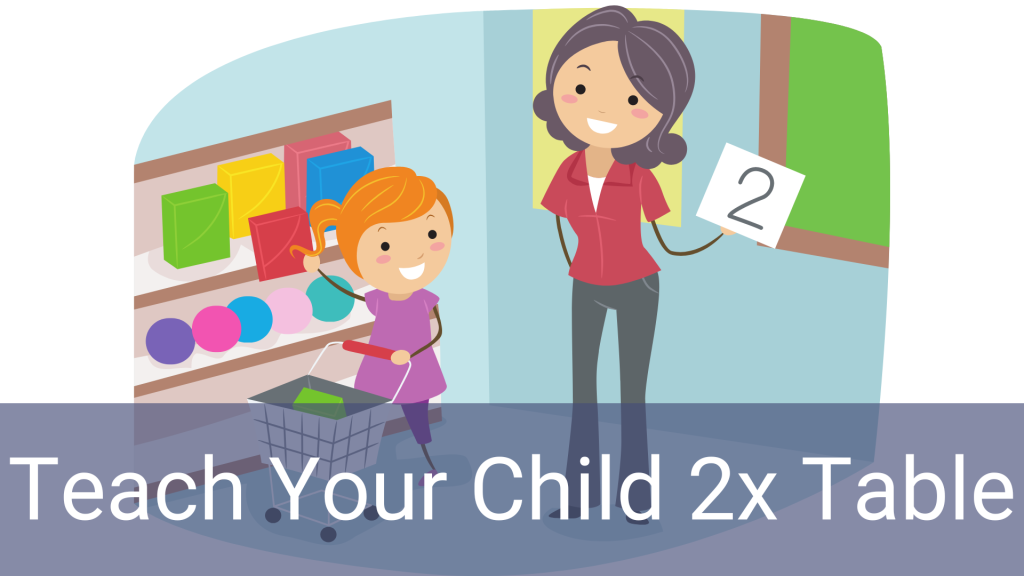In this article:
Introduction
As parents, we understand the importance of a solid math foundation for our children. Among the fundamental building blocks of math, the 2 times table is a crucial step in their mathematical journey. Teaching your child the 2 times table doesn’t have to be a daunting task. In this comprehensive guide, we’ll walk you through effective strategies and engaging activities to help your child become a master of the 2 times table.
Why the 2 Times Table Matters
Before we delve into teaching methods, let’s understand why mastering the 2 times table is essential:
- Foundation for Multiplication: The 2 times table is the gateway to understanding multiplication. It provides a basis for more complex multiplication problems down the road.
- Everyday Relevance: Understanding multiplication by 2 is practical in everyday life. It helps with doubling recipes, calculating prices when shopping, and even telling time.
- Boosts Confidence: Proficiency in the 2 times table boosts a child’s confidence in math. As they tackle more challenging math concepts, this foundational skill will serve as a valuable asset.
Introducing the Concept
Before diving into memorization, it’s crucial to help your child grasp the concept of multiplication. Here’s how you can introduce the idea of multiplying by 2:
- Use Visual Aids: Begin with visual aids like arrays of objects or groups of dots. Show your child that multiplying by 2 means adding the same number twice. For example, 2 times 3 is the same as 3 + 3.
- Hands-On Manipulatives: Utilize everyday objects like buttons, coins, or building blocks to create multiplication scenarios. Ask your child to group these objects in sets of 2 to understand the concept of doubling.
- Repeated Addition: Emphasize that multiplication is a form of repeated addition. Start with simple examples like 2 times 1, 2 times 2, and so on, encouraging your child to add the number to itself to find the product.
Fun and Interactive Learning
Learning the 2 times table can be an enjoyable experience for your child. Here are some interactive methods to make it engaging:
- Multiplication Songs: There are numerous catchy multiplication songs available online. These tunes can help your child memorize the 2 times table effortlessly. Sing along and make it a fun family activity.
- Flashcards: Create colorful flashcards with multiplication problems on one side and the answers on the other. Use them for quick, on-the-go practice.
- Board Games: Incorporate multiplication into board games like “Multiplication Bingo” or “Math Board Games.” These games add an element of competition and excitement to learning.
- Online Resources: Explore educational websites and apps designed to teach multiplication. Many of these platforms use gamified approaches to make learning enjoyable.
Repetition and Practice
Repetition is key to mastering the 2 times table. Here’s how to structure practice sessions effectively:
- Daily Drills: Set aside a short time each day for focused practice. Start with the lower numbers and gradually work your way up. For example, begin with 2 times 1, 2 times 2, and so on.
- Use Real-Life Scenarios: Apply multiplication by 2 to real-life situations. Ask your child to help you double a recipe, calculate the cost of buying two items, or count pairs of shoes in the closet.
- Quiz Time: Periodically quiz your child on the 2 times table. Create a comfortable and encouraging environment where they can answer without fear of making mistakes.
Visual Aids and Tricks
Sometimes, a little visual aid or mnemonic can go a long way in helping your child remember multiplication facts:
- Multiplication Chart: Provide your child with a multiplication chart that includes the 2 times table. Encourage them to refer to it when practicing or in doubt.
- Skip Counting: Teach your child to skip count by 2s. This technique reinforces the pattern of the 2 times table and aids memorization.
- Mnemonic Devices: Some children find it helpful to use mnemonic devices to remember multiplication facts. For example, for 2 times 9, they can remember it as “Two birds sitting on a vine,” which represents 2×9=18.
Patience and Positive Reinforcement
As you embark on this learning journey with your child, remember these essential tips:
- Patience: Understand that every child learns at their own pace. Be patient and supportive, and avoid putting unnecessary pressure on them.
- Positive Reinforcement: Celebrate small victories. Offer praise and encouragement when your child successfully answers a multiplication problem or memorizes a new fact.
- Stay Involved: Stay engaged in your child’s learning process. Ask them about their progress, offer assistance when needed, and show interest in their mathematical development.
Conclusion
Teaching your child the 2 times table is a rewarding endeavor that lays the foundation for future math success. By introducing the concept, making learning interactive, practicing consistently, and providing visual aids and tricks, you can help your child become confident and proficient in multiplication by 2. Remember, with patience, positive reinforcement, and a dash of fun, you can make the learning process enjoyable and effective, setting your child on a path to mathematical excellence.




